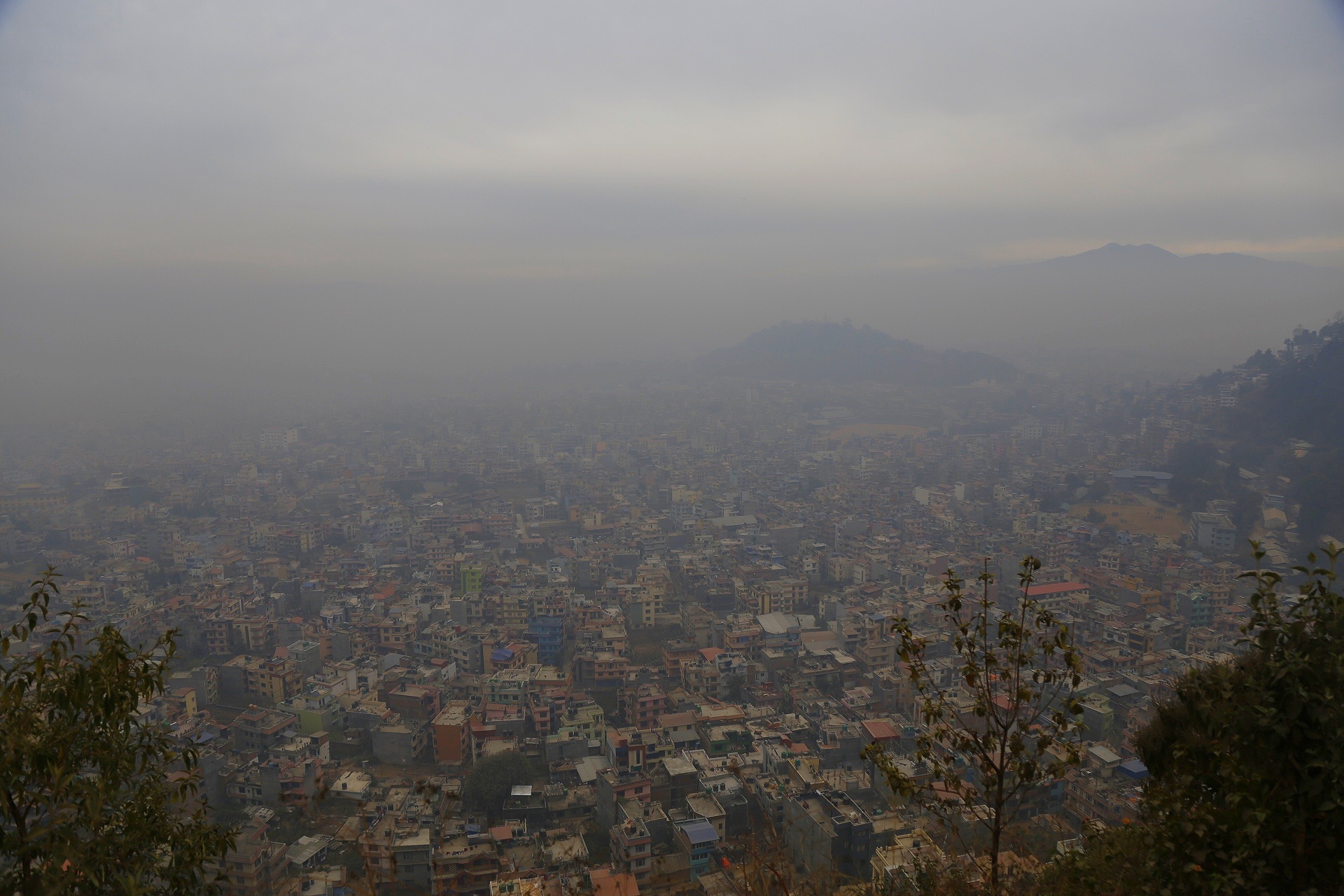Report on the WMO Air Quality and Climate Bulletin: An SDG Perspective
Executive Summary
This report analyzes the findings of the World Meteorological Organization (WMO) Air Quality and Climate Bulletin, focusing on the critical interplay between atmospheric conditions and the Sustainable Development Goals (SDGs). The bulletin highlights a detrimental cycle where climate change and air quality are intrinsically linked, necessitating integrated policy solutions. Addressing these challenges is fundamental to achieving several key SDGs, including but not limited to:
- SDG 3: Good Health and Well-being
- SDG 11: Sustainable Cities and Communities
- SDG 13: Climate Action
- SDG 15: Life on Land
- SDG 17: Partnerships for the Goals
The WMO report underscores that cross-border atmospheric hazards demand enhanced international monitoring and coordinated action to protect human health, safeguard ecosystems, and mitigate economic losses.
Climate Action and Air Quality Interlinkage (SDG 13)
The Vicious Cycle of Emissions
The bulletin establishes a direct link between activities driving climate change and those degrading air quality, a core concern for SDG 13 (Climate Action). Fossil fuel combustion and other human activities release pollutants like black carbon, nitrous oxide, and ground-level ozone, which not only harm human health but also exacerbate climate change. This feedback loop underscores the necessity of tackling climate and air quality issues in unison.
The Complex Role of Aerosols in Climate
Aerosols, or tiny airborne particles, have a complex and dual impact on the climate system.
- Warming Effect: Darker particles, such as black and brown carbon, absorb heat, warming the atmosphere and accelerating the melting of ice and glaciers upon deposition.
- Cooling Effect: Brighter aerosols, like sulphates, reflect solar radiation, providing a temporary cooling effect.
International regulations reducing sulphur in shipping fuels have successfully improved air quality but have also diminished the cooling effect of sulphate aerosols, slightly accelerating global warming. This demonstrates the complex trade-offs involved and reinforces the need for an integrated approach to emission management to holistically advance SDG 13.
Human Health and Environmental Implications (SDG 3, SDG 11, SDG 15)
Global Health Burden and Particulate Matter
Ambient air pollution presents a severe threat to SDG 3 (Good Health and Well-being), causing an estimated 4.5 million premature deaths annually worldwide. Particulate matter (PM2.5) is a primary health hazard. The 2024 data reveals significant regional disparities:
- Improvement: PM2.5 levels continued to decline in eastern China due to sustained mitigation measures.
- Hotspots: Northern India remains a significant pollution hotspot.
- Wildfire Impacts: Above-average PM2.5 levels were recorded in Canada, Siberia, central Africa, and most notably, the Amazon basin, due to record wildfire activity.
Challenges for Sustainable Cities and Communities (SDG 11)
The report highlights the Indo-Gangetic Plain, a densely populated region, where escalating air pollution has intensified winter fog episodes. This is no longer a seasonal weather event but a symptom of human impact from vehicles, construction, and biomass burning, directly challenging the objectives of SDG 11 (Sustainable Cities and Communities). The bulletin suggests that comprehensive strategies, including promoting cleaner energy and transport systems, are required to address this environmental stressor.
Threats to Life on Land (SDG 15)
Wildfires, exacerbated by a warming climate, are a major source of particle pollution and pose a growing risk to ecosystems, infrastructure, and human health, undermining SDG 15 (Life on Land). The 2024 wildfire season in the Amazon basin resulted in a measurable degradation of air quality in distant, densely populated urban centers in Brazil, illustrating the far-reaching consequences of ecosystem disruption.
The Imperative for Global Monitoring and Partnerships (SDG 17)
Strengthening Atmospheric Monitoring Infrastructure
The bulletin emphasizes the foundational importance of a global, fit-for-purpose atmospheric monitoring infrastructure. While satellites provide critical data, ground-based monitoring networks are essential for calibration and validation, particularly in developing regions where such infrastructure is sparse. Enhanced monitoring is vital for risk management, forecasting, and creating effective policies aligned with the SDGs.
International Cooperation for Global Challenges
As climate impacts and air pollution transcend national borders, international collaboration is paramount. The report’s findings, which draw on data from multiple international institutions like the Copernicus Atmosphere Monitoring Service (CAMS) and NASA, exemplify the spirit of SDG 17 (Partnerships for the Goals). The WMO calls for improved international coordination to effectively monitor and mitigate these shared global challenges.
Analysis of Sustainable Development Goals in the WMO Article
1. Which SDGs are addressed or connected to the issues highlighted in the article?
-
SDG 3: Good Health and Well-being
- The article directly links air pollution to severe health consequences, stating that “Ambient air pollution causes more than 4.5 million premature deaths each year worldwide.” It also mentions specific health issues like “childhood asthma” being reduced due to regulations on shipping fuels.
-
SDG 7: Affordable and Clean Energy
- The article advocates for “promoting cleaner energy for cooking, heating, lighting and public transport systems” as a comprehensive strategy to combat winter fog and pollution in the Indo-Gangetic Plain, which is caused by burning fossil fuels and vegetation.
-
SDG 11: Sustainable Cities and Communities
- The article discusses “urban pollution” and its impact on densely populated areas. It highlights the degradation of air quality in “densely populated urban centres in Brazil” due to wildfire emissions and the severe pollution and fog episodes in the “Indo-Gangetic Plain, home to over 900 million residents,” caused by vehicles, construction, and heating.
-
SDG 13: Climate Action
- This is a central theme of the article, which is titled “WMO Air Quality and Climate Bulletin highlights vicious cycle.” It emphasizes that “Climate change and air quality cannot be addressed in isolation” and discusses how fossil fuel burning contributes to both pollution and climate change. It also notes that climate change exacerbates wildfires, which in turn worsen air quality.
-
SDG 15: Life on Land
- The article extensively covers the impact of “wildfires” on ecosystems, particularly the “record wildfires in the western Amazon region.” It notes that wildfires pose “growing risks for infrastructure and ecosystems” and are a major contributor to particle pollution. The mention of “acid rain” from sulphate aerosols also relates to the degradation of terrestrial ecosystems.
-
SDG 17: Partnerships for the Goals
- The article stresses that cross-border hazards “demand international coordination” and calls for “improved international monitoring and collaboration.” It highlights the work of the WMO, a UN agency, and its collaboration with institutions like the Copernicus Atmosphere Monitoring Service (CAMS) and NASA, underscoring the importance of global partnerships to tackle these challenges.
2. What specific targets under those SDGs can be identified based on the article’s content?
-
Target 3.9: By 2030, substantially reduce the number of deaths and illnesses from hazardous chemicals and air, water and soil pollution and contamination.
- The article’s focus on the “4.5 million premature deaths each year” from ambient air pollution and the health hazards of particulate matter directly relates to this target.
-
Target 7.2: By 2030, increase substantially the share of renewable energy in the global energy mix.
- The call to promote “cleaner energy for cooking, heating, lighting and public transport systems” to mitigate pollution directly supports the shift towards cleaner and more renewable energy sources.
-
Target 11.6: By 2030, reduce the adverse per capita environmental impact of cities, including by paying special attention to air quality.
- The article’s detailed discussion of “urban pollution,” PM2.5 levels in cities, and the severe air quality issues in the densely populated Indo-Gangetic Plain aligns perfectly with this target’s focus on urban air quality.
-
Target 13.2: Integrate climate change measures into national policies, strategies and planning.
- The core message that “Air quality and climate change are closely interlinked” and “must be tackled together” calls for the kind of integrated policies and mitigation measures that this target promotes.
-
Target 15.3: By 2030, combat desertification, restore degraded land and soil, including land affected by desertification, drought and floods, and strive to achieve a land degradation-neutral world.
- The article highlights how “intense heat and drought” fuel wildfires, which degrade ecosystems like the Amazon basin. Addressing the drivers and impacts of wildfires is crucial for combating land degradation.
-
Target 17.18: By 2020, enhance capacity-building support to developing countries… to increase significantly the availability of high-quality, timely and reliable data disaggregated by income, gender, age, race, ethnicity, migratory status, disability, geographic location and other characteristics relevant in national contexts.
- The article underscores the need for “a global, fit-for-purpose in situ atmospheric monitoring infrastructure, especially in developing regions” and notes that “ground-based monitoring networks are essential for calibration and validation, particularly in developing countries where infrastructure remains sparse.” This directly addresses the need for better data availability.
3. Are there any indicators mentioned or implied in the article that can be used to measure progress towards the identified targets?
-
Indicator 3.9.1: Mortality rate attributed to household and ambient air pollution.
- The article explicitly states that “Ambient air pollution causes more than 4.5 million premature deaths each year worldwide,” providing a direct measure for this indicator.
-
Indicator 11.6.2: Annual mean levels of fine particulate matter (e.g. PM2.5 and PM10) in cities (population weighted).
- The article is heavily focused on measuring and monitoring “Particulate Matter 2.5 microns in diameter or smaller (PM2.5).” It discusses PM2.5 anomalies, hotspots in India, and high levels in Canada, Siberia, and the Amazon basin, making it a key metric throughout the text.
-
Indicator 15.1.1: Forest area as a proportion of total land area.
- While not stated as a percentage, the article’s discussion of “record wildfires in the western Amazon region” and the increasing problem of wildfires fueled by climate change implies a direct threat to forest area, which is the basis of this indicator. Progress would be measured by a reduction in forest loss from such events.
-
Indicator 17.18.1: Statistical capacity indicator for Sustainable Development Goal monitoring.
- The article’s call to improve “atmospheric composition monitoring infrastructure” and establish more “ground-based monitoring networks… especially in developing regions” directly relates to enhancing the statistical capacity to monitor atmospheric conditions, which is what this indicator measures.
4. Table of SDGs, Targets, and Indicators
| SDGs | Targets | Indicators |
|---|---|---|
| SDG 3: Good Health and Well-being | 3.9: Substantially reduce deaths and illnesses from air pollution. | 3.9.1: Mortality rate attributed to ambient air pollution (mentioned as “4.5 million premature deaths each year”). |
| SDG 7: Affordable and Clean Energy | 7.2: Increase the share of renewable energy. | Implied by the call for “cleaner energy for cooking, heating, lighting and public transport systems.” |
| SDG 11: Sustainable Cities and Communities | 11.6: Reduce the adverse environmental impact of cities, paying special attention to air quality. | 11.6.2: Annual mean levels of fine particulate matter (PM2.5) in cities (discussed extensively in the article). |
| SDG 13: Climate Action | 13.2: Integrate climate change measures into national policies and planning. | Implied by the need for “integrated policies” and “mitigation measures” to tackle the “vicious cycle” of air quality and climate change. |
| SDG 15: Life on Land | 15.3: Combat desertification and restore degraded land. | 15.1.1: Forest area as a proportion of total land area (implied by the threat of “record wildfires” in the Amazon). |
| SDG 17: Partnerships for the Goals | 17.18: Enhance capacity-building support to developing countries for data availability. | 17.18.1: Statistical capacity indicator (implied by the call for improved “atmospheric monitoring infrastructure… especially in developing regions”). |
Source: reliefweb.int







